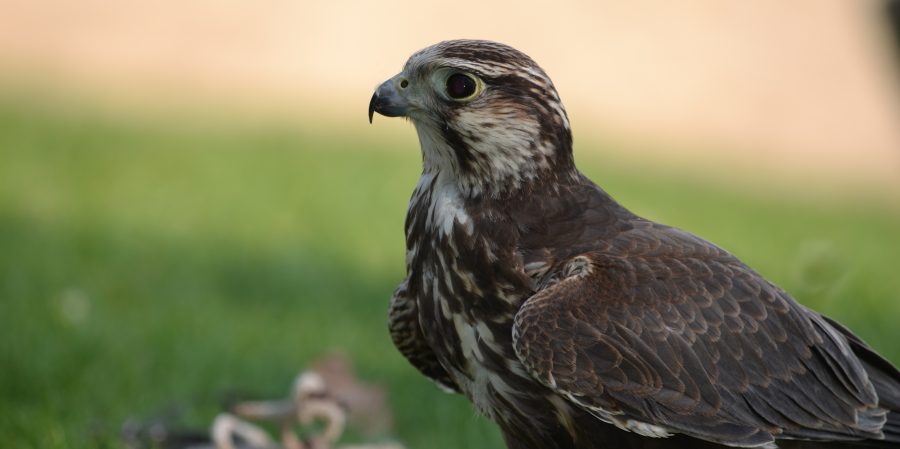- Zoology
- Daily Critter Facts
- For Teachers
- Study Guides
- Diseases & Parasites
- Contact

In the realm of avian prowess, few creatures command the awe and admiration quite like the saker falcon (Falco cherrug). With its regal bearing, incredible speed, and pinpoint accuracy, this raptor stands as a testament to the magnificence of nature’s designs. Let us delve into the world of this majestic bird of prey, exploring its characteristics, habitat, behavior, and significance.
The Saker Falcon: An Overview
The saker falcon, renowned for its striking appearance and formidable hunting skills, belongs to the Falconidae family, a lineage celebrated for its aerial prowess. It boasts a wingspan ranging up to 41.34 inches, with females typically larger than males. Its plumage showcases a beautiful blend of browns, grays, and creams, providing excellent camouflage in its natural habitat.
Habitat and Distribution
Native to vast regions spanning from Eastern Europe and Central Asia to parts of China and the Middle East, the saker falcon inhabits a diverse array of landscapes. It favors open grasslands, steppes, deserts, and semi-arid regions where it can spot prey from great distances and engage in high-speed pursuits with ample space to maneuver.
Behavior and Hunting Techniques
As a diurnal (active during the day) hunter, the saker falcon relies on keen eyesight and remarkable agility to capture its prey. From its elevated vantage point, it surveils the terrain for small mammals, birds, and occasionally insects. When a target is spotted, the saker falcon executes a breathtaking stoop, plummeting earthward at speeds exceeding 149 mph before striking with its sharp talons.
Conservation Status and Threats
Despite its status as a symbol of power and grace, the saker falcon faces numerous threats to its survival. Habitat loss, driven by human encroachment and agricultural expansion, poses a significant challenge. Furthermore, illegal trapping and trade for falconry exacerbate population declines, particularly in certain regions where this practice remains prevalent.
Conservation efforts spearheaded by organizations such as the World Wildlife Fund (WWF) and BirdLife International aim to address these threats through habitat preservation, anti-poaching measures, and public awareness campaigns. Additionally, collaborative initiatives between governments, conservationists, and local communities are crucial for safeguarding the saker falcon and its ecosystem.
Cultural Significance and Symbolism
Throughout history, the saker falcon has captured the imagination of cultures worldwide, often revered as a symbol of strength, freedom, and nobility. In falconry, an ancient art dating back millennia, the saker falcon holds a prestigious place as one of the most prized hunting companions. Its inclusion in heraldry, literature, and art further underscores its cultural significance, serving as a potent emblem of power and prestige.
In the vast tapestry of the natural world, the saker falcon emerges as a beacon of beauty and resilience. Its mastery of the skies, coupled with its role in shaping human culture, solidifies its status as one of nature’s most remarkable creations. As stewards of this planet, it falls upon us to ensure the continued survival of this magnificent bird, preserving not only a species but a legacy that spans centuries.
Guest author/writer: Joshua Onyango
Photo credit: Tim Sträter
